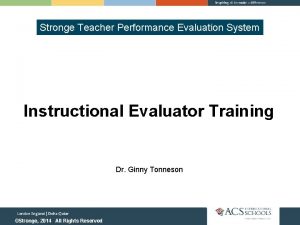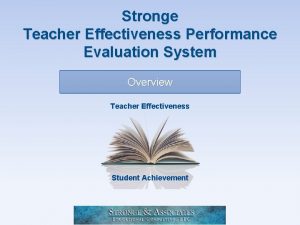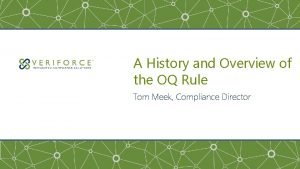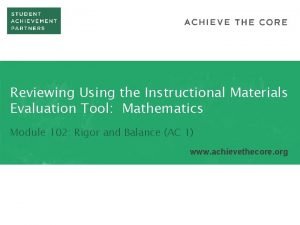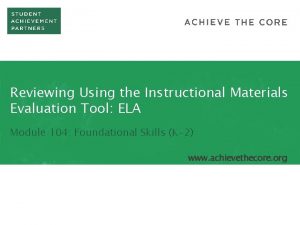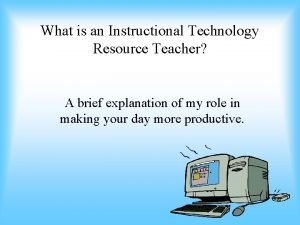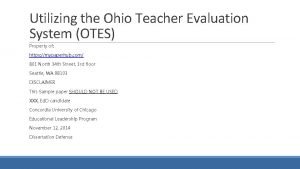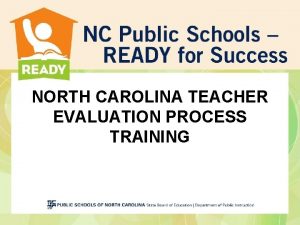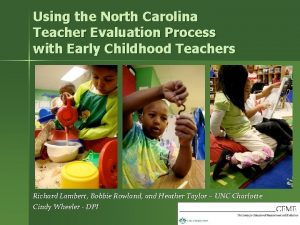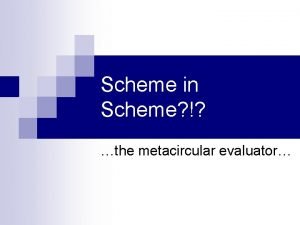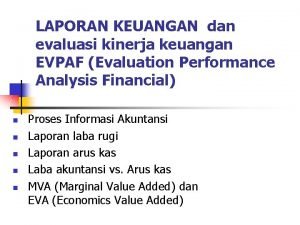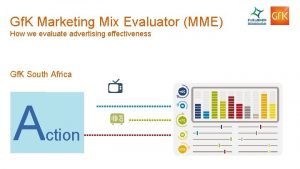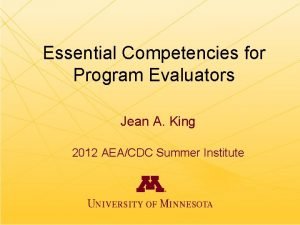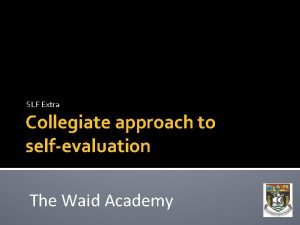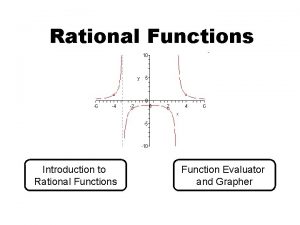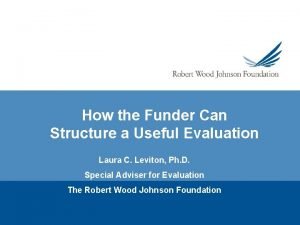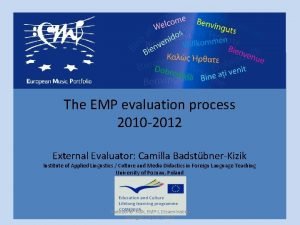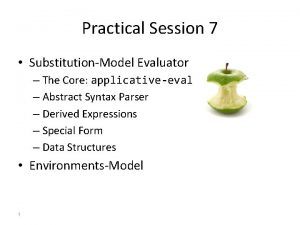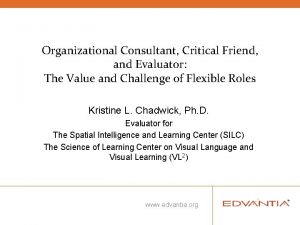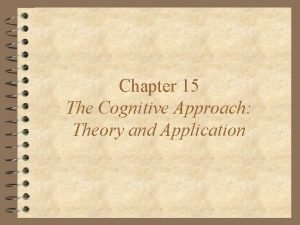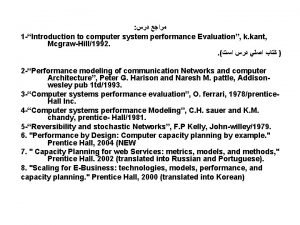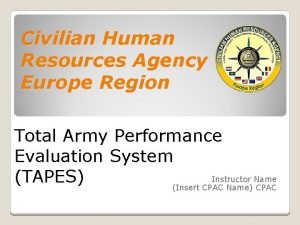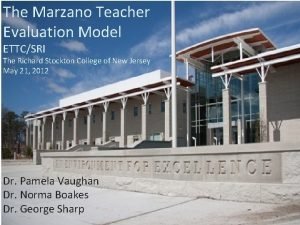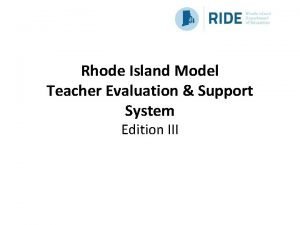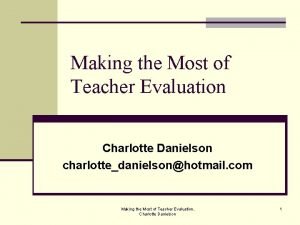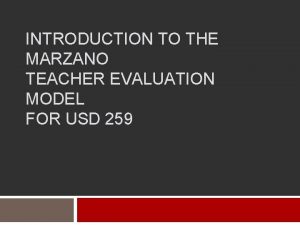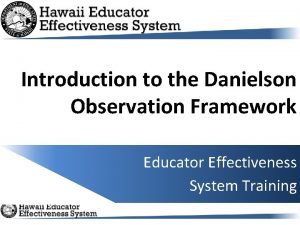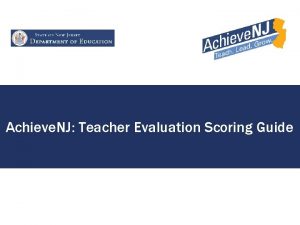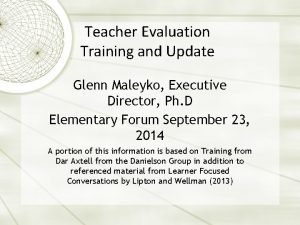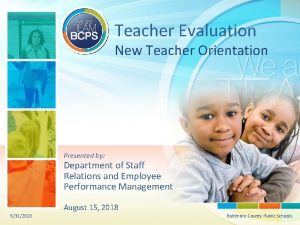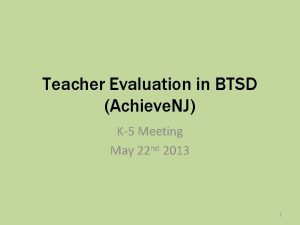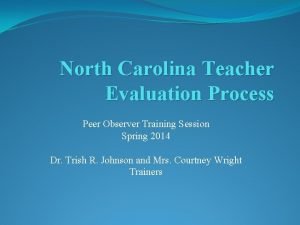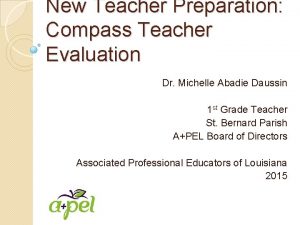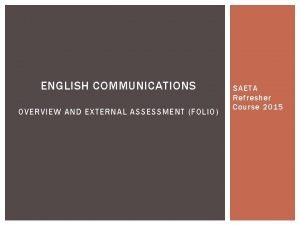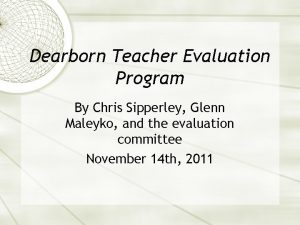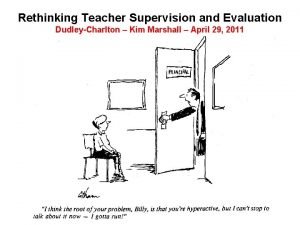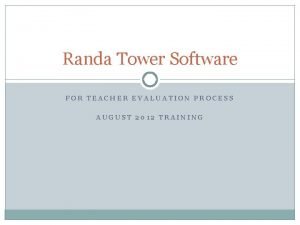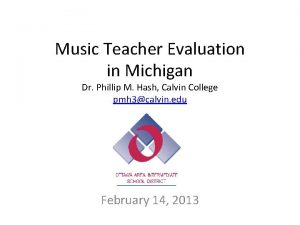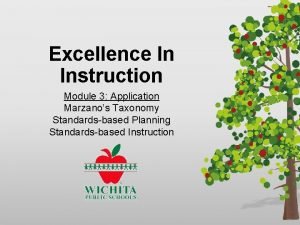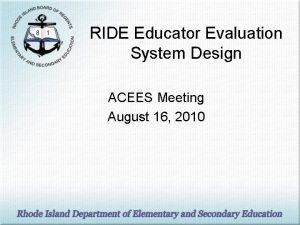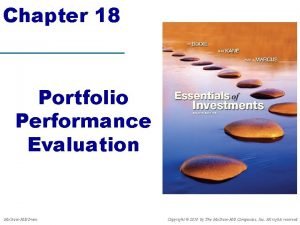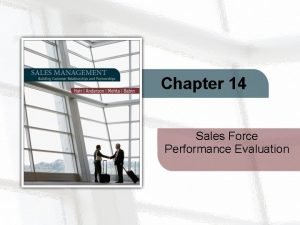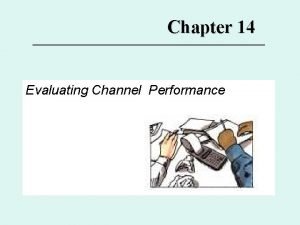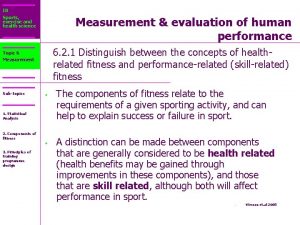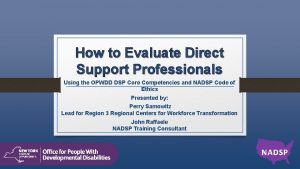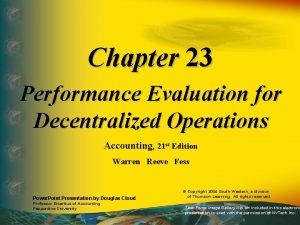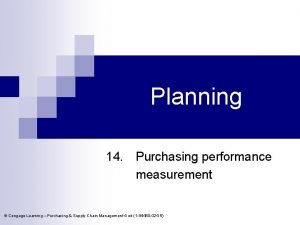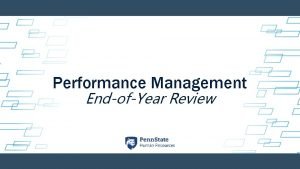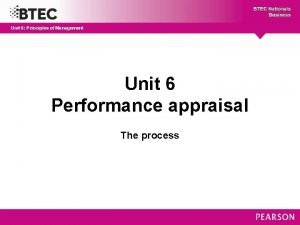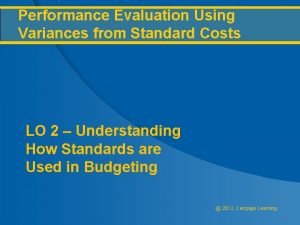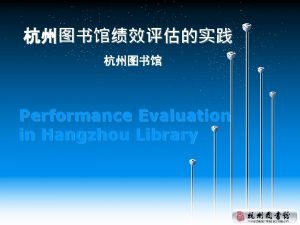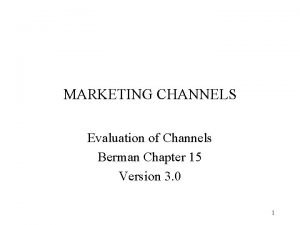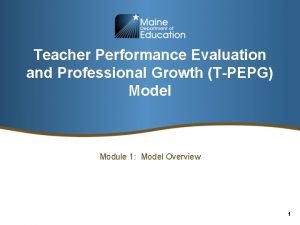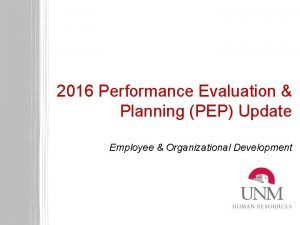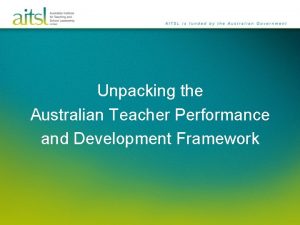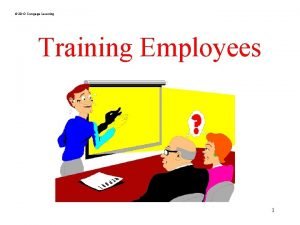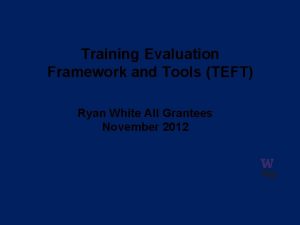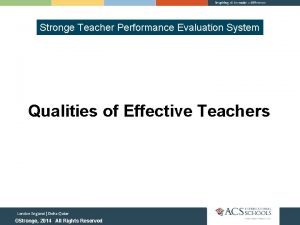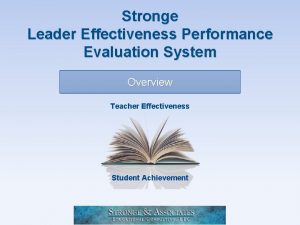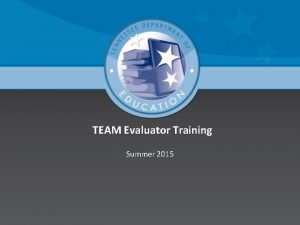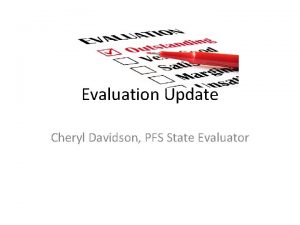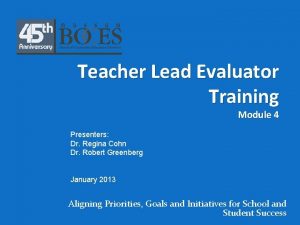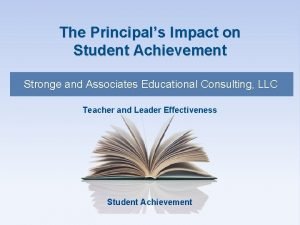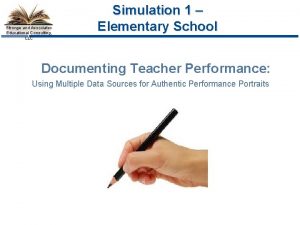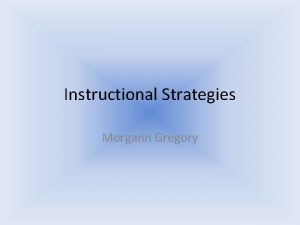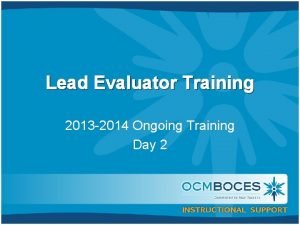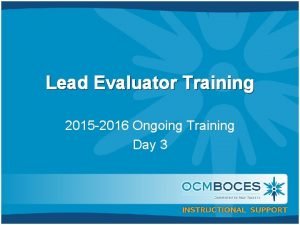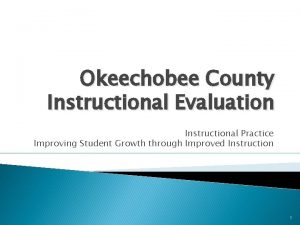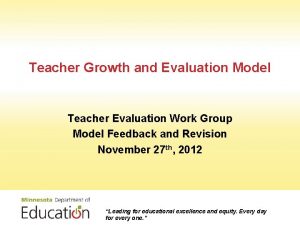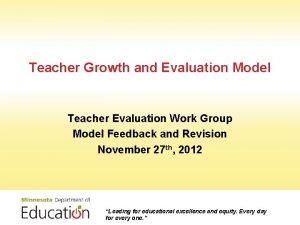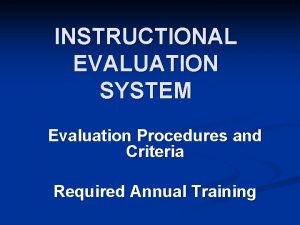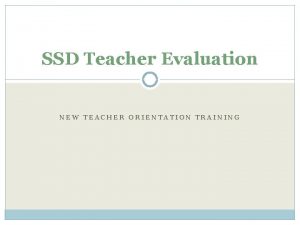Stronge Teacher Performance Evaluation System Instructional Evaluator Training







































































- Slides: 71

Stronge Teacher Performance Evaluation System Instructional Evaluator Training Dr. Ginny Tonneson ©Stronge, 2014 All Rights Reserved

TPES PERFORMANCE STANDARD REVIEW

Main Components Performance Standard 3: Instructional Delivery The teacher effectively engages students in learning by using a variety of instructional strategies to meet individual learning needs. Sample Performance Indicators Examples of teacher work conducted in the performance of the standard may include, but are not limited to: The teacher: 3. 1 3. 2 3. 3 3. 4 Performance Indicators Engages and maintains students in their learning. Builds upon students’ existing knowledge and skills. Differentiates instruction to meet students’ needs. Reinforces learning outcomes consistently throughout the lesson Highly Effective In addition to meeting the requirements for Effective. . . Effective is the expected level of performance. The teacher optimizes students’ opportunity to learn by engaging them in higher order thinking and/or enhanced performance skills. The teacher effectively engages students in learning by using a variety of instructional strategies to meet individual learning needs. Partially Effective The teacher inconsistently uses instructional strategies that meet individual learning needs. Performance Rubric Ineffective The teacher’s instruction inadequately addresses students’ learning needs.

Teacher Performance Standards 1. Professional Knowledge 2. Instructional Planning 3. Instructional Delivery 4. Assessment of/for Learning 5. Learning Environment 6. Professionalism 7. Communication and Advocacy 8. Student Progress* * Anticipated implementation during 2015/16

Performance Standard 1 Professional Knowledge The teacher demonstrates an understanding of the curriculum, subject content, and the developmental needs of students by providing relevant learning experiences.

Performance Standard 2 Instructional Planning The teacher plans using the school’s curriculum, effective strategies, resources, and data to meet the needs of all students.

Performance Standard 3 Instructional Delivery The teacher effectively engages students in learning by using a variety of instructional strategies to meet individual learning needs.

Performance Standard 4 Assessment of/for Learning The teacher systematically gathers, analyzes, and uses data to measure student progress, guide instruction, and provide timely feedback.

Performance Standard 5 Learning Environment The teacher uses resources, routines, and procedures to provide a respectful, positive, safe, and student-centered environment that is conducive to learning.

Performance Standard 6 Professionalism The teacher maintains a commitment to professional ethics, international-mindedness, and the ACS core values and campus philosophy, and is proactive for and participates in professional growth that results in enhancement of student learning.

Performance Standard 7 Communication and Advocacy The teacher communicates effectively with students, school personnel, families, and the community to enhance, promote, and advocate for student learning.

Performance Standard 8* Student Progress The work of the teacher results in acceptable and measurable student progress. * Anticipated implementation during 2015/16

OBSERVATIONS

Announced Observations • Directly focused on teacher performance standards, particularly: § § Standard 1: Professional Knowledge Standard 3: Instructional Delivery Standard 5: Learning Environment Standard 7: Communication and Advocacy • Twice per year for all teachers § New teachers (for first two years) − by end of November and by end of April § Established teachers − by end of April • • Includes pre- and post- conference (post conference within 5 work days) Minimum of 30 consecutive minutes May not see all standards in one observation Additional observations initiated by administrator or teacher

Announced Observation Form (abbreviated)

GUIDING QUESTIONS ACTIVITY (PP. 3 -4) Consider the performance standards and indicators and come up with guiding questions to help teachers reflect on their instructional practice.

COMMON VOCABULARY ACTIVITY (P. 9) As an individual, write down your definition of each term and how it relates to teacher evaluation. Be prepared to share with the larger group.

Getting to a Common Vocabulary • Evidence • Data • Reliability • Feedback

What is Evidence? Evidence considered “The available body of facts or information indicating whether a belief or proposition is true or valid. ” Rating determined (Dictionary. com)

What are data? Facts and statistics collected together for reference or analysis Compare and contrast evidence and data All data are information. However, evidence is data that can support a claim. Put in another way, all evidence is data, but not all data are evidence. (Oxford English Dictionary)

What is reliability? The extent to which an experiment, test, or measuring procedure yields the same results on repeated trials. . . consistency

What is feedback? Helpful information or criticism that is given to someone to say what can be done to improve a performance or product; the transmission of evaluative or corrective information about an action, event, or process

EVIDENCE

Focus of Evidence Teacher Practice Student Learning STANDARDS & INDICATORS

Evidence… • Is standards-based • Can include both examples of meeting or not meeting the expectation • Does not include judgment (that comes during the summative rating)

Documenting Evidence Tips • Avoid terms that express judgment (“neat classroom, ” “fun activity, ” “caring attitude”) • Avoid words that imply quantity (“most, ” “few, ” “several”) • Stick to the five senses • Remember Who, What, When, Where, How, and So What

How can this evidence be improved? Instructional Delivery: The teacher effectively engages students in learning by using a variety of instructional strategies to meet individual learning needs. 3. 3 Differentiates instruction to meet students’ needs. How many? How much? Spent the majority of the time on whole class instruction for math although several of the students demonstrated proficiency on the long division process in the first few minutes of class. How?

Better? Instructional Delivery: The teacher effectively engages students in learning by using a variety of instructional strategies to meet individual learning needs. 3. 3 Differentiates instruction to meet students’ needs. The teacher spent 45 minutes reviewing the steps in the long division process with the whole class although four students correctly completed all steps in the process on the problem introduced during the warm-up activity.

How can this evidence be improved? Learning Environment: The teacher uses resources, routines, and procedures to provide a respectful, positive, safe, and student-centered environment that is conducive to learning. 5. 1 Arranges the classroom to maximize learning while providing a safe physical environment. How is this defined? How? Desks in groups? Center areas? Classroom neatly arranged so students can work in small groups. When during the lesson do students work in small groups?

Better? Learning Environment: The teacher uses resources, routines, and procedures to provide a respectful, positive, safe, and student-centered environment that is conducive to learning. 5. 1 Arranges the classroom to maximize learning while providing a safe physical environment. All desks are arranged in clusters of 5 -6. During the Explore activity, the teacher distributed task cards to each cluster and had them work together to solve the Explore problem.

LOOKING AT EVIDENCE ACTIVITY (PP. 10 -11) Decide whether the statement provides “solid” evidence. If not, rewrite the statement with details which would make it better evidence.

LUIS NUNEZ VIDEO ACTIVITY (P. 12) Write down evidence you collect from the video. Compare your evidence with a partner. How could your evidence statements be improved?

FEEDBACK

What Makes Feedback Effective? Effective feedback is: • Focused on teaching and learning rather than other areas • Relevant to performance standards • Contextual rather than context free; context that should be considered include: § School’s mission and improvement goals § Curriculum and instructional goals § Teachers’ career histories, level of expertise, teaching styles and instructional goals § Students’ cultural background, prior learning, current needs (Gordon, S. P. , 2006)

Ineffective Post-Observation Conferences • Dominated by the observer • Focused on narrow concerns • Provide a teacher with short, prescriptive feedback • Threaten teacher self-esteem • Influenced by an unequal power relationship • Lack teacher reflection and self-evaluation • Lack reasoning and critical thinking Summarized by Blase & Blase (2004)

Effective Post-Observation Conferences The Observer: • Listens • Knows about effective teaching methods • Understands how teaching relates to learning • Uses examples and demonstrations • Gives teachers choice and encourages risk taking • Offers professional literature and other resources • Recognizes teachers’ strengths • Maintains a focus on improving instruction • Knows how to make a meeting reflective and nonthreatening Summarized by Blase & Blase (1999)

POST-OBSERVATION CONFERENCE VIDEO ACTIVITY (P. 13) What did the observer do well during the post-observation conference? What could she have improved?

TIME-ON-TASK ACTIVITY (PP. 14 -15) Using the time-on-task evidence gathered from an observation, what feedback might you give the teacher?

SIMULATION 1: CANDACE RICHOUX U. S. History Observation

Simulation 1 – Candace Richoux • Read the background information and lesson plan in your packet (pp. 17 -19). • Watch video observation. • Note evidence of teacher performance standards (p. 20). 51

WHAT DID YOU SEE? ACTIVITY (P. 21) Refer to the notes you took during the video. Turn them into evidence statements tied to specific performance standards.

1. Professional Knowledge The teacher demonstrates an understanding of the curriculum, subject content, and the developmental needs of students by providing relevant learning experiences. 1. 1 Effectively addresses appropriate curriculum standards and subject/programmespecific objectives. 1. 2 Integrates key content elements and facilitates students’ use of higher level skills as appropriate in instruction. 1. 3 Demonstrates an ability to link present content with past and future learning experiences, other subject areas, and real world experiences and applications. 1. 4 Demonstrates an accurate knowledge of the subject matter. 1. 5 Demonstrates skills relevant to the subject area(s) taught. 1. 6 Bases instruction on learning outcomes that reflect high expectations and an understanding of the subject. 1. 7 Demonstrates an understanding of the intellectual, social, emotional, and physical development of the age group. 1. 8 Communicates clearly and checks for student understanding. 53

1. Professional Knowledge • References the ACT word of the day "mogul, " provides definition, and links it to the Industrial Capitalist lesson. • Engage/hook activity uses higher-level thinking but premise is based on a movie that most students have not seen. The teacher provided explanation for students who have not seen the movie. • Uses slips for "poor" versus "millionaire" to demonstrate the inequity of wealth among people in the late 1800 s. • Asks questions at a variety of cognitive levels that allow for different answers, such as "What have we been talking about that would affect United States culture? “ • "I want you to write down every little item you see in this political cartoon. Just write down what you see. " Clearly communicates expectations and demonstrates best practice for political cartoons by first having students use observation skills before jumping into analysis.

3. Instructional Delivery The teacher effectively engages students in learning by using a variety of instructional strategies to meet individual learning needs. 3. 1 Engages and maintains students in their learning. 3. 2 Builds upon students’ existing knowledge and skills. 3. 3 Differentiates instruction to meet students’ needs. 3. 4 Reinforces learning outcomes consistently throughout the lesson. 3. 5 Uses a variety of effective instructional strategies and resources. 3. 6 Uses instructional technology to enhance student learning. 3. 7 Communicates clearly, checks for understanding and adjusts delivery accordingly. 3. 8 Offers clear explanations and directions throughout the lesson.

3. Instructional Delivery • Has students define the vocabulary from the standards in their own words. • Explains the process of vertical integration to students with Andrew Carnegie as the example. Modeled vertical and horizontal integration in the way the teacher recorded student responses and commented explicitly. • Asks questions at a variety of cognitive levels that allow for different answers, such as "What have we been talking about that would affect United States culture? ” • Asks the question: "If you went back to the late 1800 s, knowing what you know now, what business would you invest your money in? " Students must use analysis and evaluation skills in order to write their answer for two minutes. 59

3. Instructional Delivery (cont. ) • Asks many questions while teaching rather than lecturing so that students must supply answers based either on prior knowledge or their own thoughts and opinions. • Uses questioning with the political cartoon rather than telling: "Do you think his size in the cartoon is important? ” • Students share their answers with a partner and then share out with the class what their partners said, ensuring that they were listening to their partners. By using partners, all students get a chance to share their answers with someone; answers will also be collected after class and reviewed by the teacher. • Provides a transition from one activity to the next: "The reason we did this, is because we're going to talk about the people who recognized what they should invest in and made lots of money because of it. The first is Andrew Carnegie. ” 60

3. Instructional Delivery (cont. ) • Gives students a scenario in which they can go back in time and invest in a company and become rich today so that students see how the past is relevant to today's world. • Uses Bell Work that incorporates prior knowledge necessary for today's work. • Ties current learning objectives to previously learned information. • While she passes out slip for "poor" or "millionaire, " has students write predictions on their whiteboards. • Uses multiple instructional strategies during 55 minute lesson (think, pair, share, connections, questioning, writing, direct instruction, vocabulary break-out) • Explains the assignment procedures , "I'm going to give you two minutes. I want you to write down. . . tell me what you would invest in and tell me why. ” 61

3. Instructional Delivery (cont. ) • "I want you to write down every little item you see in this political cartoon. Just write down what you see. " Clearly communicates expectations and demonstrates best practice for political cartoons by first having students use observations skills before jumping into analysis. • Asks for follow-up after students say what he sees in the political cartoon: "What is the Capitol Building looking like? " "Okay, it looks like a factory. . . do you think that's important? ” • Has students write a paragraph to show their understanding and provides them with a word bank and the direction "I want you to use at least three of these words. ” Gives them 4 minutes for assignment. • No differentiation during lesson. 62

5. Learning Environment The teacher uses resources, routines, and procedures to provide a respectful, positive, safe, and student-centered environment that is conducive to learning. 5. 1 Arranges the classroom to maximize learning while providing a safe physical environment. 5. 2 Establishes clear expectations for classroom rules and procedures early in the school year, and enforces them consistently and fairly. 5. 3 Maximizes instructional time and minimizes disruptions. 5. 4 Establishes a climate of trust and teamwork amongst teachers and students by creating a fair, caring, respectful, and enthusiastic environment. 5. 5 Respects students’ diversity, including language, culture, race, and gender, and special needs with an aim at developing international-mindedness. 5. 6 Makes accommodations for all student needs intellectually and affectively.

5. Learning Environment • Students speak during the millionaire activity, but are quiet when the teacher resumes talking. • Asks the question: "If you went back to the late 1800 s, knowing what you know now, what business would you invest your money in? " Students must use analysis and evaluation skills in order to write their answer for two minutes. • No class disruptions noted. • Students share their answers with a partner and then share out with the class what their partners said, ensuring that they were listening to their partners. By using partners, all students get a chance to share their answers with someone; answers will also be collected after class and reviewed by the teacher.

5. Learning Environment (cont. ) • Does not require students to raise hands before speaking, which encourages vocal and out-going students to participate more, but sometimes means that less vocal do not engage in whole class discussions. • Provides positive feedback, "I'd say that you're pretty correct there. “Teacher says, "You all were excellent today. I really appreciate it. " Thanks students as they had her their papers before dismissal. • Allows students to react to millionaire getting things others do not, driving home the point of the inequities of the late 1800 s. • Has students write a paragraph to show their understanding and provides them with a word bank and the direction "I want you to use at least three of these words so I know you understand. "

7. Communication and Advocacy The teacher communicates effectively with students, school personnel, families, and the community to enhance, promote, and advocate for student learning. 7. 1 Uses agreed-upon language, correct vocabulary and grammar and acceptable forms of oral and written expression. 7. 2 Explains directions, concepts and lesson content to students in a logical, sequential, and age-appropriate manner. 7. 3 Shares major instructional learning outcomes and classroom expectations, as age appropriate, with students and parents. 7. 4 Initiates communication and responds to families or guardians concerning student expectations, progress or problems in a timely and confidential manner. 7. 5 Coordinates efforts with school-wide teams and service providers to reach educational decisions that enhance student learning and safety. 7. 6 Supports and communicates the strategic plan, policies, regulations, and school events. 7. 7 Uses technology to support and enhance communication as appropriate. 7. 8 Communicates appropriately with all stakeholders such as students, colleagues, administrators, other school personnel, community members, and families.

7. Communication and Advocacy • Shares learning objectives with students by deconstructing vocabulary into language easily understood by students. • Communicates information and structures lesson clearly and logically (e. g. , vocabulary explanations, expectations expounded, explanation of horizontal and vertical integration with visuals). • Uses classroom whiteboards computer/projection, and student whiteboards during instruction. • Oral and written communications grammatically correct with appropriate vocabulary usage.

WHAT WOULD YOU SAY? ACTIVITY (P. 22) What feedback might you give the teacher? With a partner, role-play a portion of your post-observation conference.

SIMULATION 2: DEANDRA ST. CROIX Kindergarten Literacy Observation

Simulation 2 – Deandra St. Croix • Read the background information and lesson plan in your packet (pp. 29 -30). • Watch video observation. • Note evidence of teacher performance standards (p. 31). 72

WHAT DID YOU SEE? ACTIVITY (P. 32) Refer to the notes you took during the video. Turn them into evidence statements tied to specific performance standards.

1. Professional Knowledge The teacher demonstrates an understanding of the curriculum, subject content, and the developmental needs of students by providing relevant learning experiences. 1. 1 Effectively addresses appropriate curriculum standards and subject/programmespecific objectives. 1. 2 Integrates key content elements and facilitates students’ use of higher level skills as appropriate in instruction. 1. 3 Demonstrates an ability to link present content with past and future learning experiences, other subject areas, and real world experiences and applications. 1. 4 Demonstrates an accurate knowledge of the subject matter. 1. 5 Demonstrates skills relevant to the subject area(s) taught. 1. 6 Bases instruction on learning outcomes that reflect high expectations and an understanding of the subject. 1. 7 Demonstrates an understanding of the intellectual, social, emotional, and physical development of the age group. 1. 8 Communicates clearly and checks for student understanding. 74

1. Professional Knowledge • Models to students how to work with a partner to identify the beginning blend in a sound. • Teacher has students sorted into blue line and green line, and intends to have one group get water while the other group does chair pushups, and then have the two groups switch. • Helps students remember how to make letters by use of consistent vocabulary, such as for lower-case d, "I make a line down, then push up and pull around. “ • Teacher says, "I think we need a movement break. “ • Teacher uses whole group instruction for blends; some students identify blends very quickly, others appear confused. • Uses cards with pictures that represent words with the blends.

1. Professional Knowledge (cont. ) • Uses the technique of "stretching" the word so that students can hear all the sounds. • Helps students remember how to make letters by use of consistent vocabulary, such as for lower-case d, "I make a line down, then push up and pull around. "

3. Instructional Delivery The teacher effectively engages students in learning by using a variety of instructional strategies to meet individual learning needs. 3. 1 Engages and maintains students in their learning. 3. 2 Builds upon students’ existing knowledge and skills. 3. 3 Differentiates instruction to meet students’ needs. 3. 4 Reinforces learning outcomes consistently throughout the lesson. 3. 5 Uses a variety of effective instructional strategies and resources. 3. 6 Uses instructional technology to enhance student learning. 3. 7 Communicates clearly, checks for understanding and adjusts delivery accordingly. 3. 8 Offers clear explanations and directions throughout the lesson.

3. Instructional Delivery • Tells students to check an elbow partner to see if they have the same blend. • Teacher sums up blends by having students tell an elbow partner "Something they learned about blends" and then explains that blends are words that start with two consonants. • Uses the technique of "stretching" the word so that students can hear all the sounds. • Uses whole group instruction for lesson. • Models to students how to work with a partner to identify the beginning blend in a sound. • Debriefs with students on the modeling of how to work together in partners. Asks what they did in the model to work together successfully. 80

3. Instructional Delivery (cont. ) • Says "Boys and girls, wait until I say 1, 2, 3 go before sounding out. " • Helps students remember how to make letters by use of consistent vocabulary, such as for lower-case d, "I make a line down, then push up and pull around. “ • One of the students identifies that his name starts with a consonant blend sound but Ms. St. Croix does not respond in a way that makes clear that she understands that the student has just applied the learning in a real-world context, nor does she take the opportunity to confirm and help him extend his own understanding or to model it for other students. • Students begin to raise their hands to signal they are finished; teacher continues to work with two boys. 81

3. Instructional Delivery (cont. ) • Teacher calls students up one pair at a time to put up their blends. There is no activity to keep the students who do not have the specific pairs engaged. Several students are visibly disengaged. • The initial blend activity took approximately 10 minutes to complete from start-to-finish, during which time most students only found the common blend for one pair of words. "While we're collecting, please think about what a blend is, because you're going to tell somebody. " 82

5. Learning Environment The teacher uses resources, routines, and procedures to provide a respectful, positive, safe, and student-centered environment that is conducive to learning. 5. 1 Arranges the classroom to maximize learning while providing a safe physical environment. 5. 2 Establishes clear expectations for classroom rules and procedures early in the school year, and enforces them consistently and fairly. 5. 3 Maximizes instructional time and minimizes disruptions. 5. 4 Establishes a climate of trust and teamwork amongst teachers and students by creating a fair, caring, respectful, and enthusiastic environment. 5. 5 Respects students’ diversity, including language, culture, race, and gender, and special needs with an aim at developing international-mindedness. 5. 6 Makes accommodations for all student needs intellectually and affectively.

5. Learning Environment • Tells students to raise their hands in the air when they've figured out their blend as a signal to the teacher that they're done. • Asks a question and several students call out at once. A few raise their hands. • Debriefs with students on the modeling of how to work together in partners. Asks what they did in the model to work together successfully. • When students supply explanations for what worked during the model, the teacher provides feedback about their answers to both acknowledge the answers and expound upon them. • Reminds students about the "Sit EEKK" strategy (Elbows to elbows, knees to knees") • Says "Boys and girls, wait until I say 1, 2, 3 go before sounding out. "

5. Learning Environment (cont. ) • Many students talk while teacher hands out cards to the pairs. Reminds several students to "please sit EEKK. “ • Teacher stands in the front again and says "Shhh" to get their attention. • Teacher says, "I see lots of friends quietly holding their cards in the air. “ • A student calls out "She's just confusing me!" Teacher answers, "Let's see if we can work yours out together. ” • Teacher says, "Boys and girls, can I please have you sit on your cards until if call your group? " • A student calls out, "Where's my card? " Teacher stops and looks at the student but does not address it.

7. Communication and Advocacy The teacher communicates effectively with students, school personnel, families, and the community to enhance, promote, and advocate for student learning. 7. 1 Uses agreed-upon language, correct vocabulary and grammar and acceptable forms of oral and written expression. 7. 2 Explains directions, concepts and lesson content to students in a logical, sequential, and age-appropriate manner. 7. 3 Shares major instructional learning outcomes and classroom expectations, as age appropriate, with students and parents. 7. 4 Initiates communication and responds to families or guardians concerning student expectations, progress or problems in a timely and confidential manner. 7. 5 Coordinates efforts with school-wide teams and service providers to reach educational decisions that enhance student learning and safety. 7. 6 Supports and communicates the strategic plan, policies, regulations, and school events. 7. 7 Uses technology to support and enhance communication as appropriate. 7. 8 Communicates appropriately with all stakeholders such as students, colleagues, administrators, other school personnel, community members, and families.

7. Communication and Advocacy • Models to students how to work with a partner to identify the beginning blend in a sound. • Debriefs with students on modeling how to work together in partners. Asks what they did in the model to work together successfully. • Explains what students will do with their partners (work together to identify blend from their pictures, share their blends from their whiteboards) • Oral and written communications grammatically correct with appropriate vocabulary usage.

WHAT WOULD YOU SAY? ACTIVITY (P. 33) What feedback might you give the teacher? Switch roles with your partner and role-play a portion of your postobservation conference.

QUESTIONS?
 Stronge teacher evaluation
Stronge teacher evaluation Stronge teacher evaluation
Stronge teacher evaluation Stronge teacher evaluation
Stronge teacher evaluation Stronge leader effectiveness performance evaluation model
Stronge leader effectiveness performance evaluation model Oq evaluator training
Oq evaluator training Instructional materials evaluation tool
Instructional materials evaluation tool Evaluation tool for instructional materials
Evaluation tool for instructional materials Instructional resource teacher
Instructional resource teacher Ohio teacher evaluation system
Ohio teacher evaluation system South carolina teacher evaluation system
South carolina teacher evaluation system Randa teacher evaluation
Randa teacher evaluation Metacircular
Metacircular Nowc adalah
Nowc adalah Marketing mix evaluator
Marketing mix evaluator Evaluator competencies
Evaluator competencies Turbine stress evaluator
Turbine stress evaluator Excel formula evaluator
Excel formula evaluator Evaluator s5 ht
Evaluator s5 ht Function evaluator
Function evaluator Evaluator eol
Evaluator eol Emp moodle
Emp moodle External evaluator
External evaluator External evaluator
External evaluator Self-instructional training example
Self-instructional training example Self-instructional training example
Self-instructional training example Computer performance evaluation
Computer performance evaluation Master brief sheet
Master brief sheet Chra europe employment
Chra europe employment Marzano elements
Marzano elements Ride teacher evaluation rubric
Ride teacher evaluation rubric Jane horney
Jane horney Marzano teacher evaluation model 2018
Marzano teacher evaluation model 2018 Danielson pre observation questions and answers
Danielson pre observation questions and answers Danielson teacher evaluation scores
Danielson teacher evaluation scores Teacher evaluation
Teacher evaluation Bcps teacher evaluation
Bcps teacher evaluation Teacher evaluation
Teacher evaluation Teacher evaluation
Teacher evaluation Compass teacher evaluation
Compass teacher evaluation Leon leads teacher evaluation score
Leon leads teacher evaluation score Folio teacher evaluation
Folio teacher evaluation Teacher evaluation
Teacher evaluation Rethinking teacher supervision and evaluation
Rethinking teacher supervision and evaluation Teacher evaluation software
Teacher evaluation software Sample music teacher evaluation
Sample music teacher evaluation Planning standards-based lessons/units marzano
Planning standards-based lessons/units marzano Ride teacher evaluation
Ride teacher evaluation Erf form for teacher 2
Erf form for teacher 2 Good afternoon my dear students
Good afternoon my dear students Computer architecture performance evaluation methods
Computer architecture performance evaluation methods Portfolio performance evaluation problems
Portfolio performance evaluation problems Behaviorally anchored rating scales
Behaviorally anchored rating scales An evaluating criteria for channel members.
An evaluating criteria for channel members. Progress and performance measurement and evaluation
Progress and performance measurement and evaluation Measurement and evaluation in human performance 5e download
Measurement and evaluation in human performance 5e download Direct support professional performance evaluation
Direct support professional performance evaluation Performance evaluation for decentralized operations
Performance evaluation for decentralized operations Human performance evaluation test
Human performance evaluation test Purchasing performance evaluation
Purchasing performance evaluation Citibank performance evaluation case study
Citibank performance evaluation case study Housekeeping items meeting
Housekeeping items meeting Principles of performance evaluation
Principles of performance evaluation Progress and performance measurement and evaluation
Progress and performance measurement and evaluation Performance evaluation using variances from standard costs
Performance evaluation using variances from standard costs Library staff performance evaluation
Library staff performance evaluation Channel performance evaluation
Channel performance evaluation Performance evaluation model
Performance evaluation model Pep performance evaluation
Pep performance evaluation Australian teacher performance and development framework
Australian teacher performance and development framework 4 phases of rpms cycle
4 phases of rpms cycle Training evaluation
Training evaluation Teft model
Teft model
